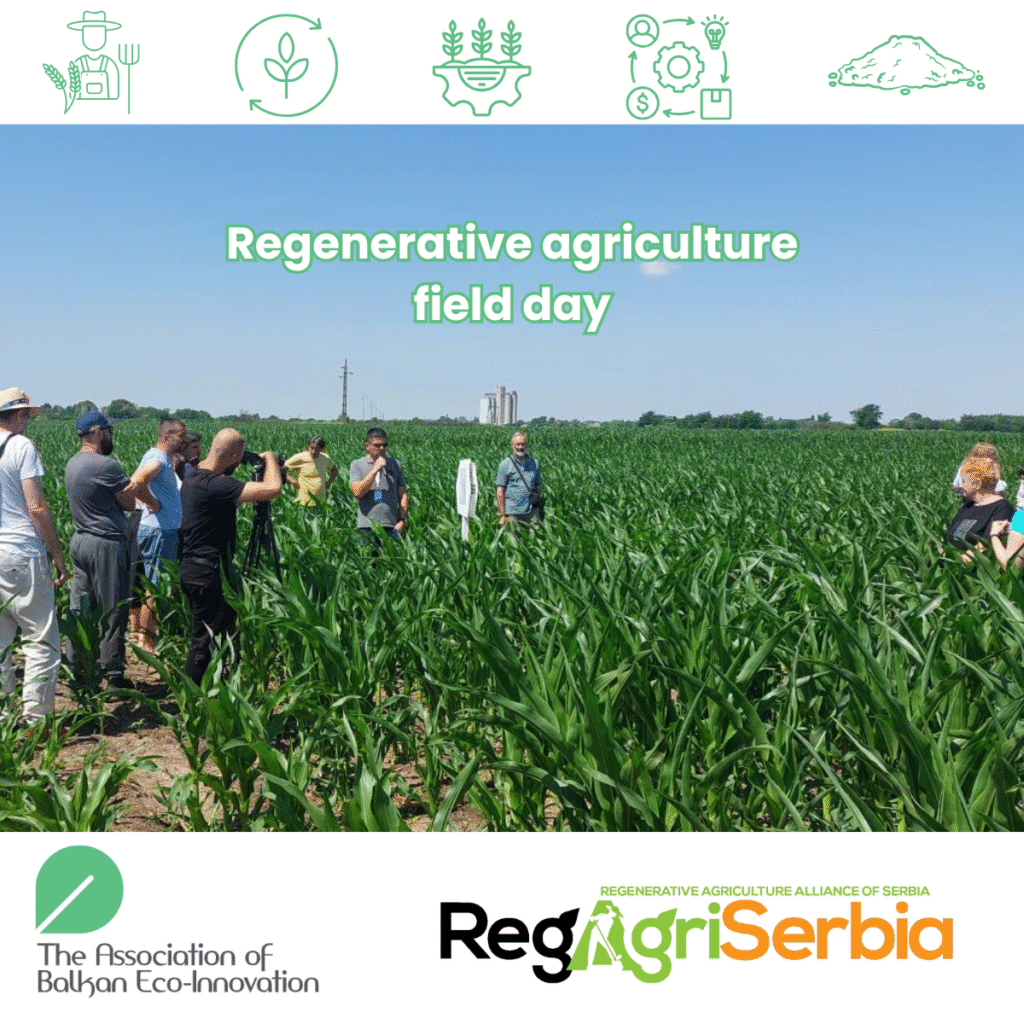As the coordinator of the Regenerative Agriculture Alliance of Serbia, The Association of Balkan Eco-Innovation (ABE) organized the first Field Day of 2025 on June 16 in the village of Torak (Žitište municipality), bringing together dozens of farmers, advisors, researchers, and food industry representatives to explore the benefits and challenges of regenerative agriculture in practice.
The host of the event, Teodor Baloš, is an experienced regenerative farmer cultivating 85 hectares of degraded chernozem using regenerative methods to grow wheat, corn, soybeans, beans, and sunflowers. Attendees participated in lectures and toured his fields to witness firsthand the long-term effects of regenerative practices.
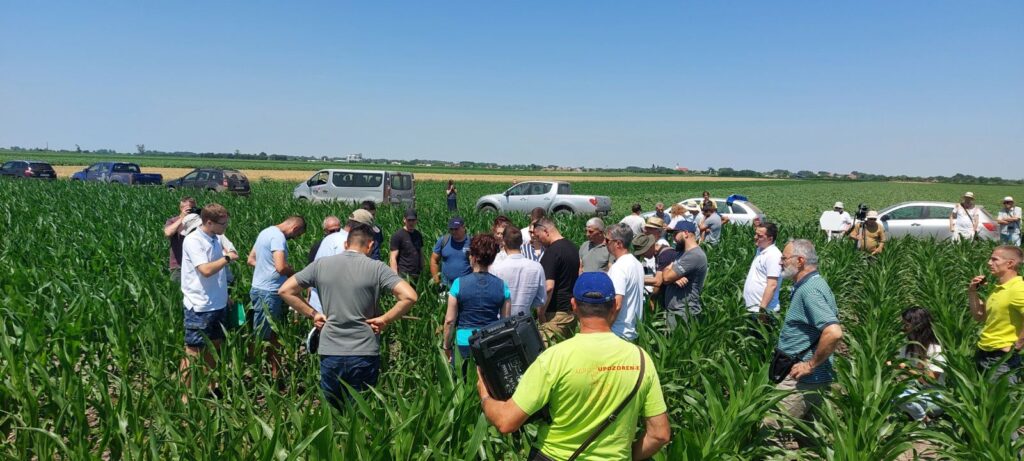
Regenerative farming as a strategic response to modern challenges
At the opening session, held at the local community center in Torak, Teodor shared his personal motivation for transitioning to regenerative farming. He cited soil erosion, declining humus levels, rising input costs, labor shortages, and the need for economic sustainability as key drivers of change.
He emphasized that regenerative agriculture demands a new way of planning, from rethinking crop protection strategies to timely cover crop termination. He also pointed out the necessity of land leveling before the transition and shared some of the technical and logistical challenges he faced, including dealing with wild animals and mistakes that led to better planning in future seasons.
Despite these challenges, the benefits were clear:
- Better soil moisture retention
- Increased biological activity
- Higher organic matter
Stronger plant resilience during extreme weather
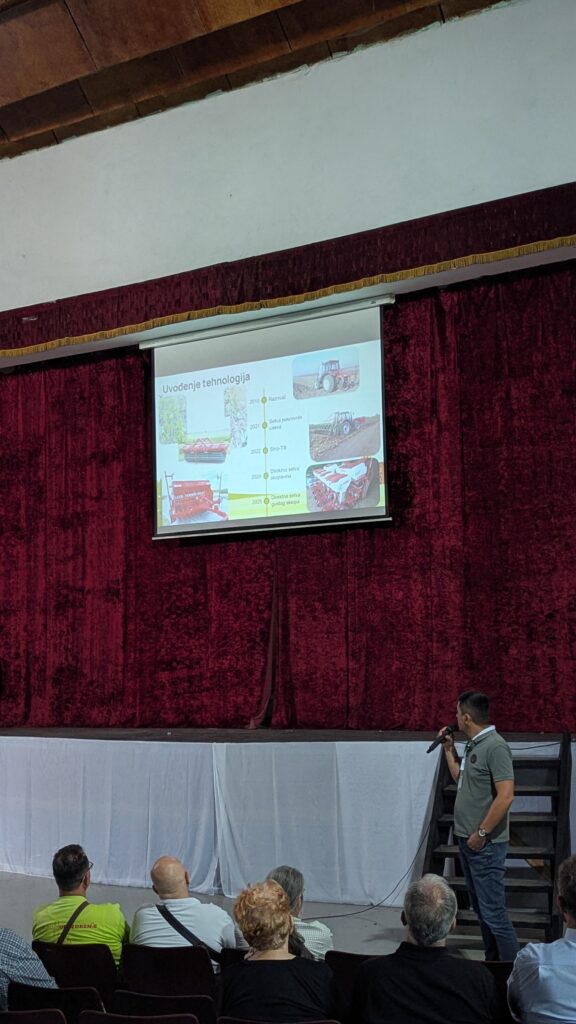
Demonstrating equipment and soil health
During the field tour, participants explored the strip-till machinery and direct-seeding equipment Teodor uses in his daily operations. A soil moisture probe was also used to demonstrate how much water is retained in soil that is not plowed or compacted by heavy equipment.
This hands-on approach helped farmers visualize the practical advantages of regenerative practices, especially in terms of long-term soil health and reduced input dependency.
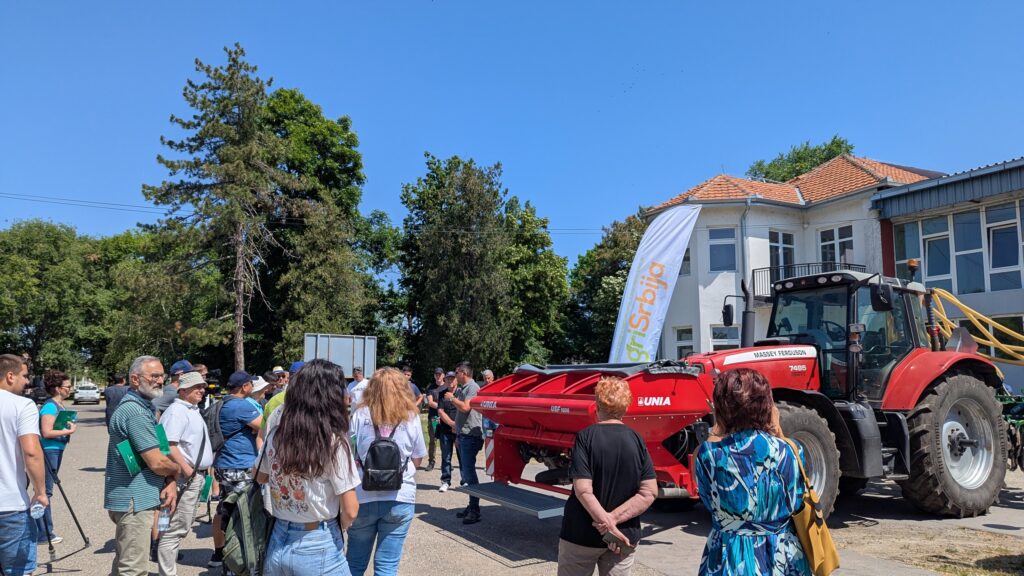
A closing discussion with a clear message
The event concluded with open discussions and refreshments, reinforcing the core message:
Regenerative agriculture is not a quick fix, but it is a smart, profitable, and future-focused farming strategy.
What’s Next?
The Regenerative Agriculture Alliance of Serbia, coordinated by ABE, will continue to organize similar events throughout the country. These gatherings aim to:
- Connect farmers and practitioners
- Support knowledge exchange
- Facilitate the transition to regenerative practices
- Contribute to improved soil health, climate resilience, and sustainable food production
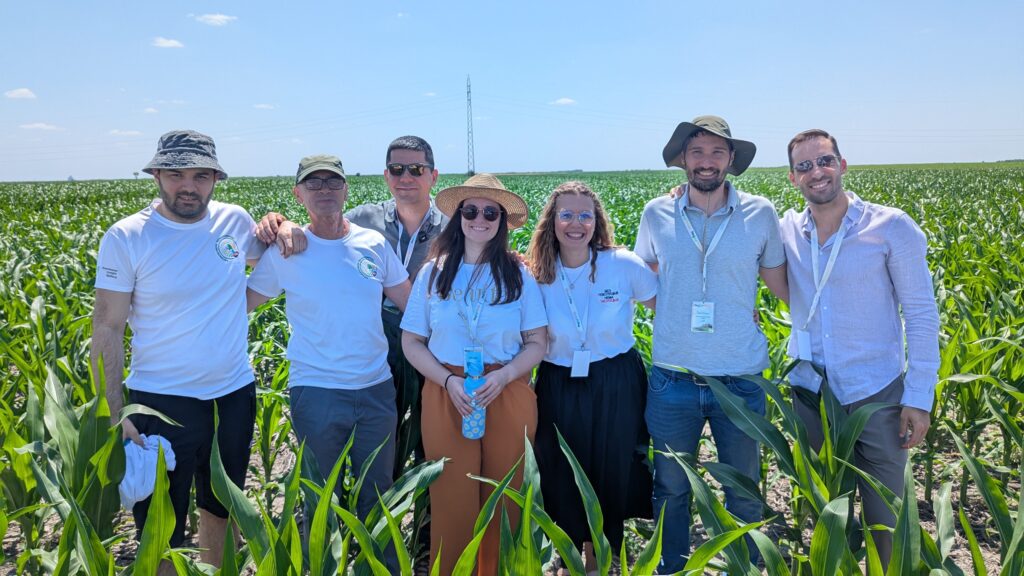
Learn more about the Alliance.
